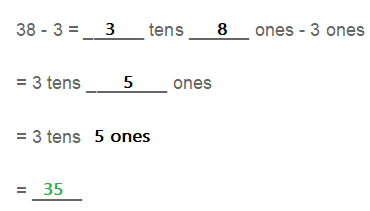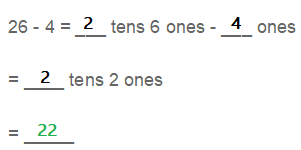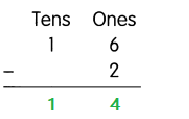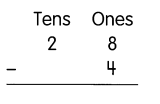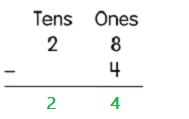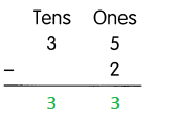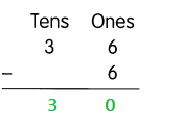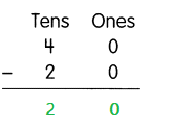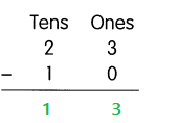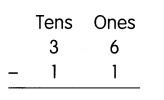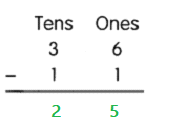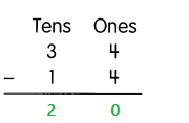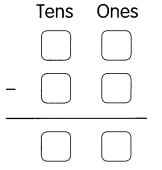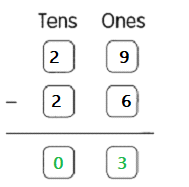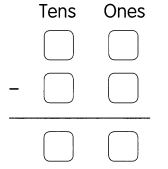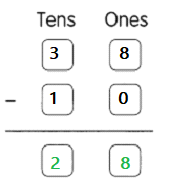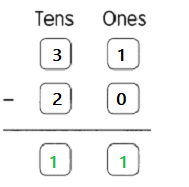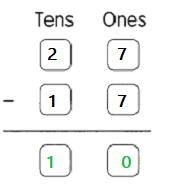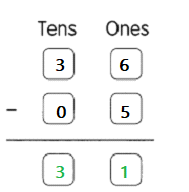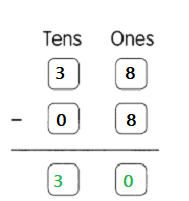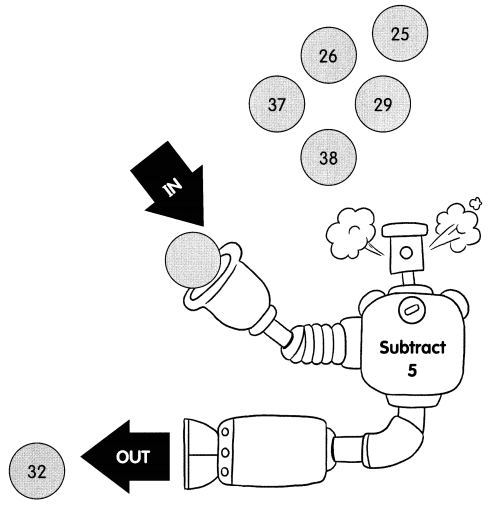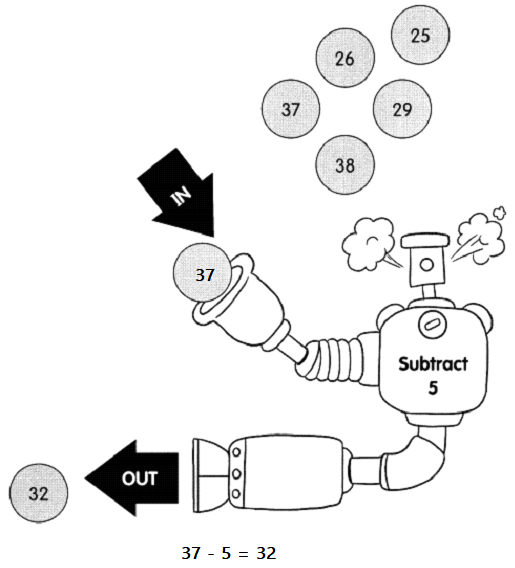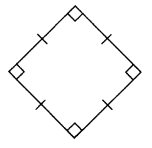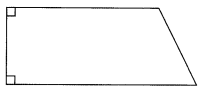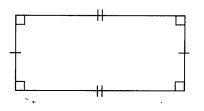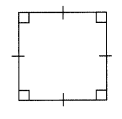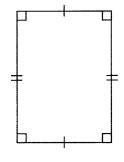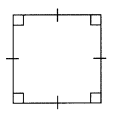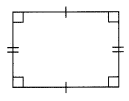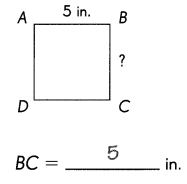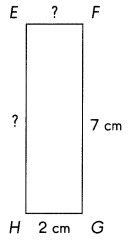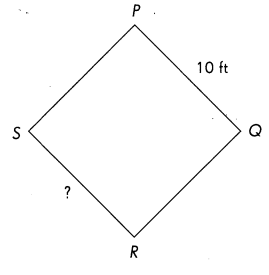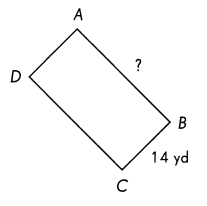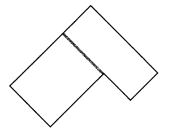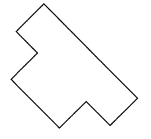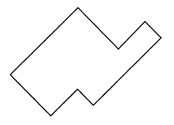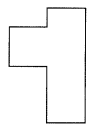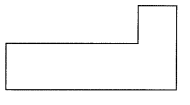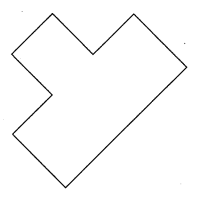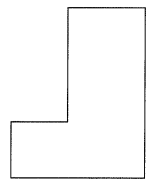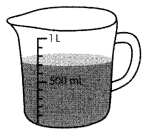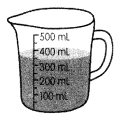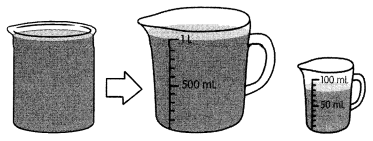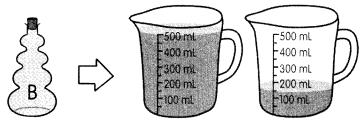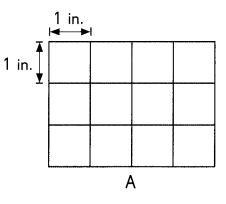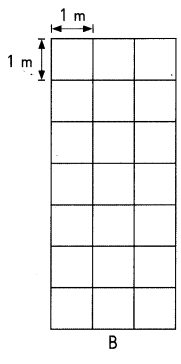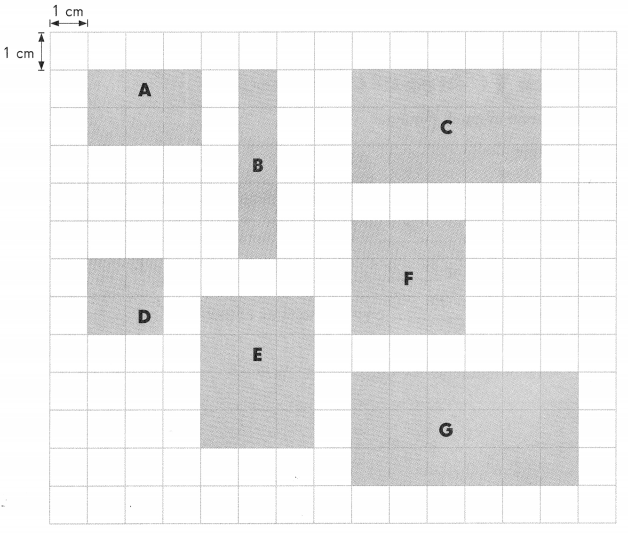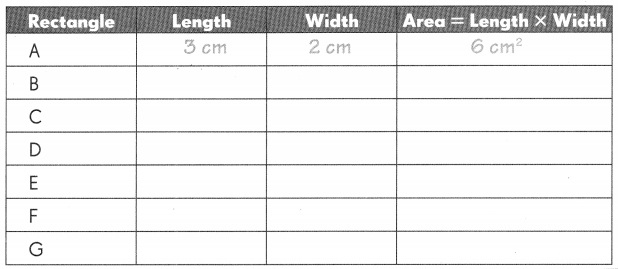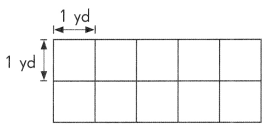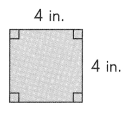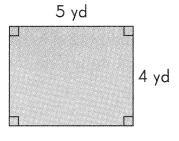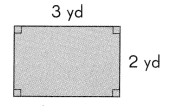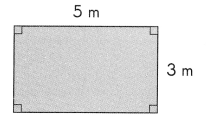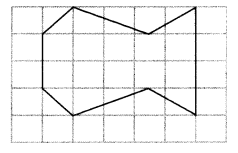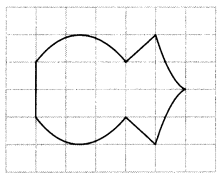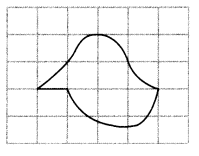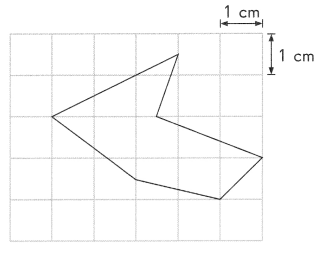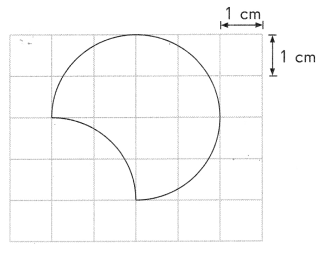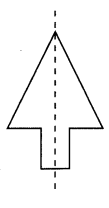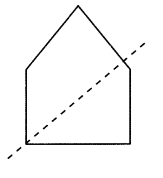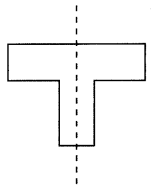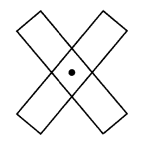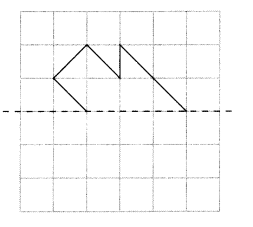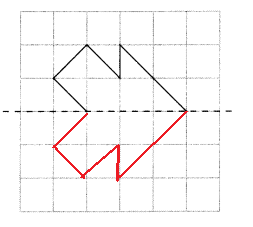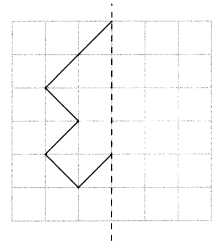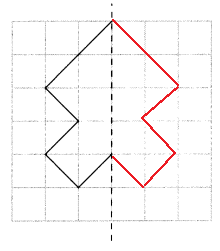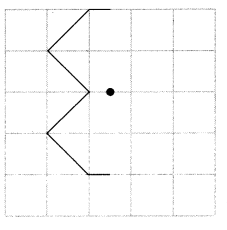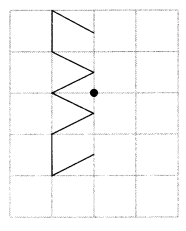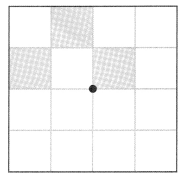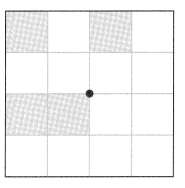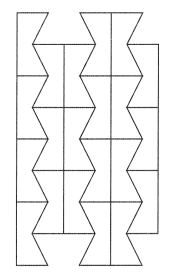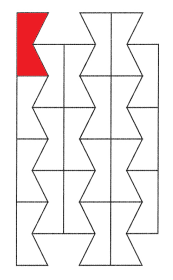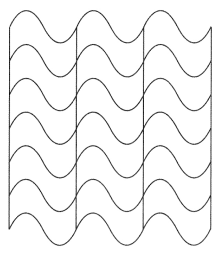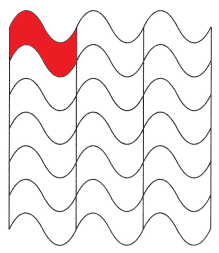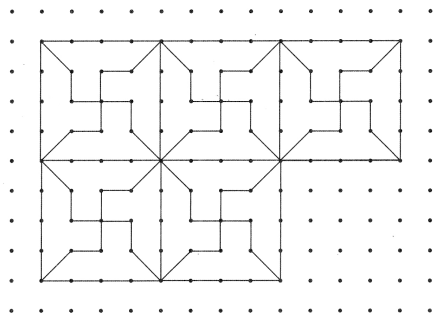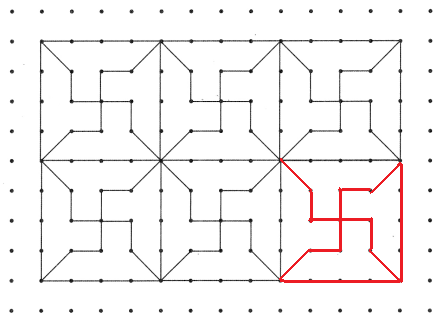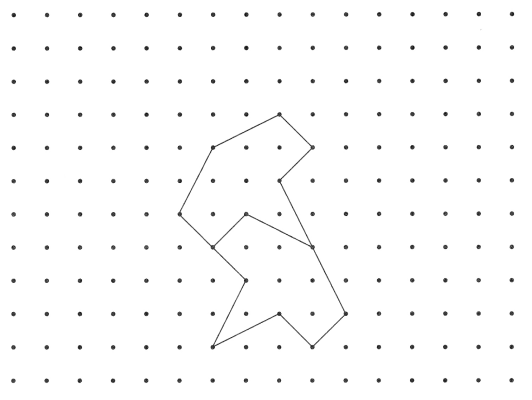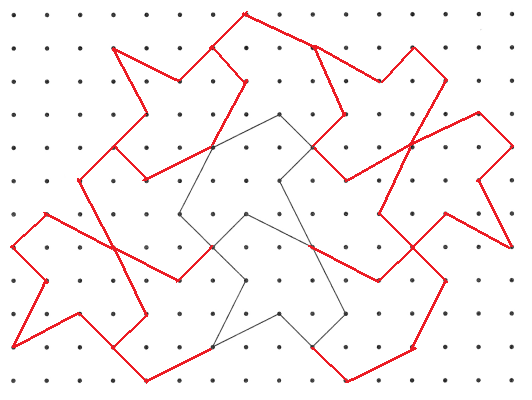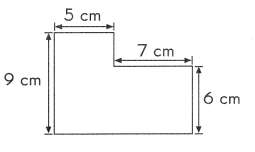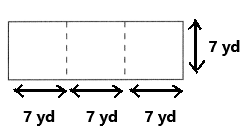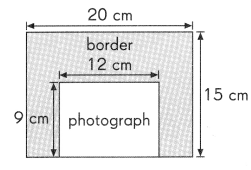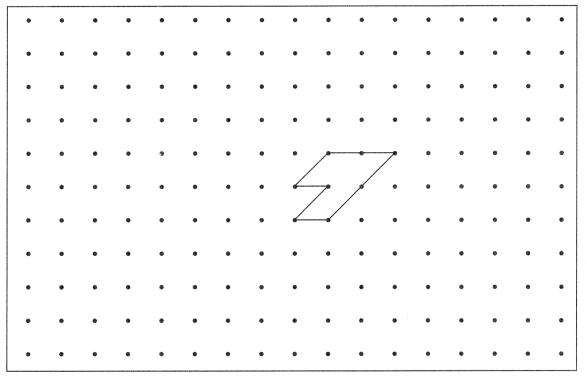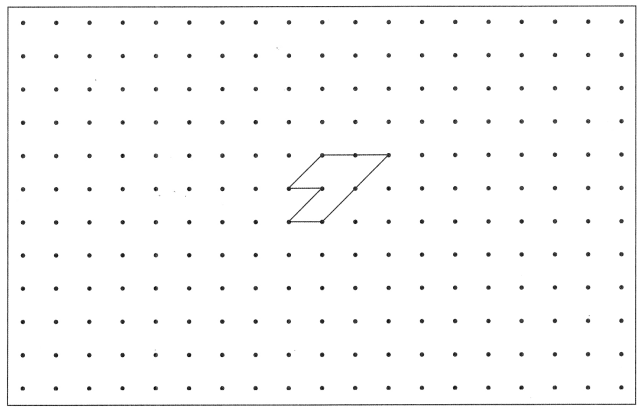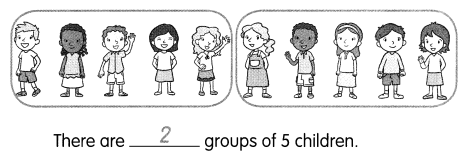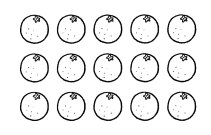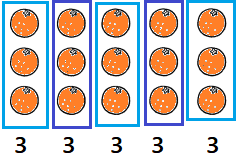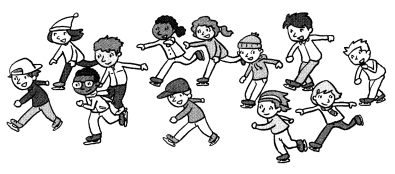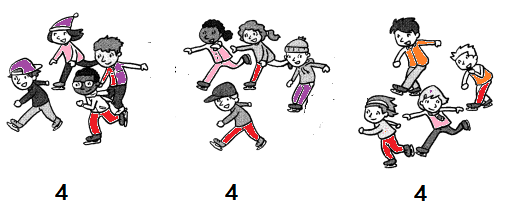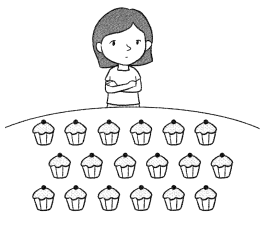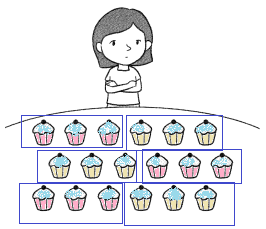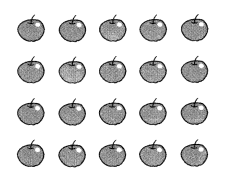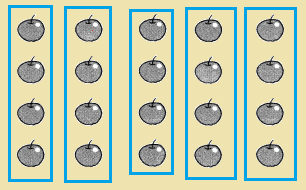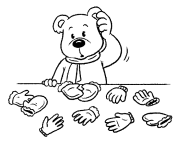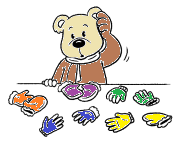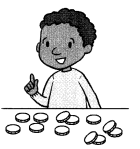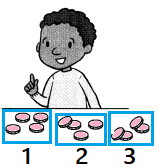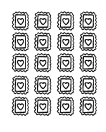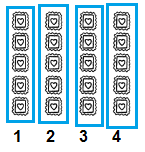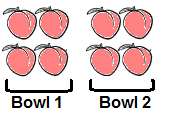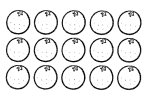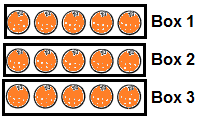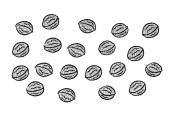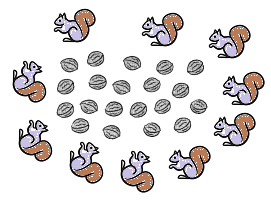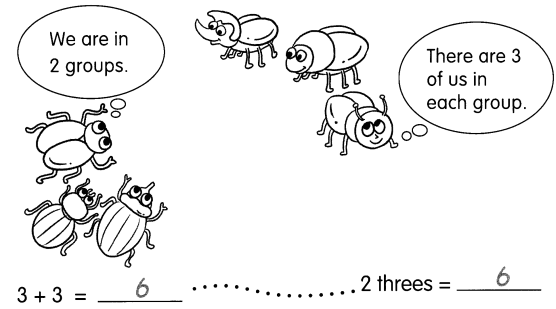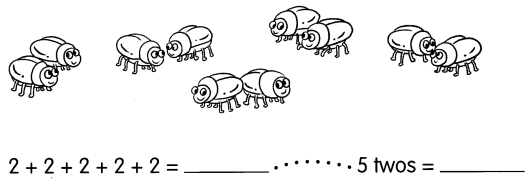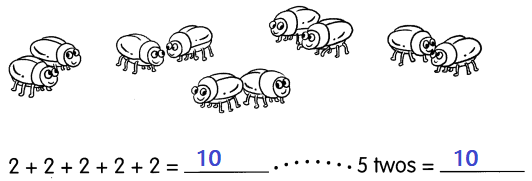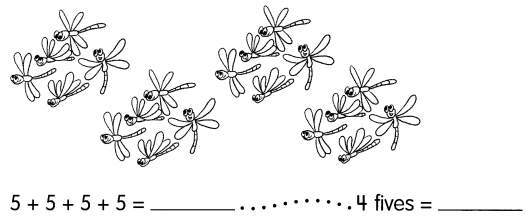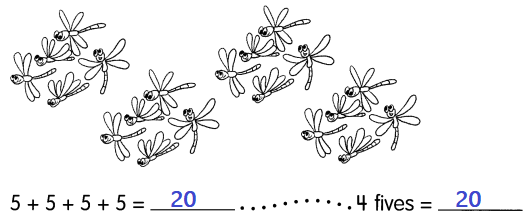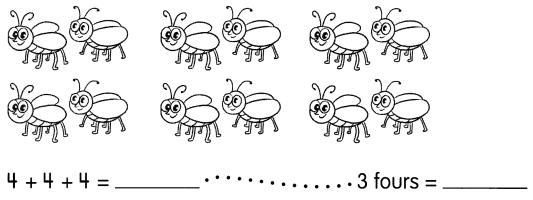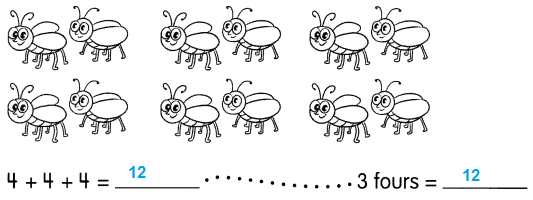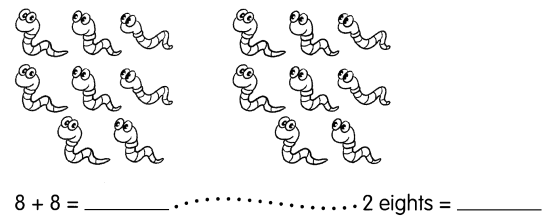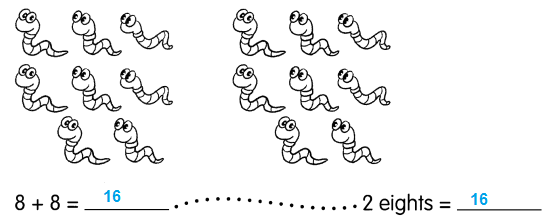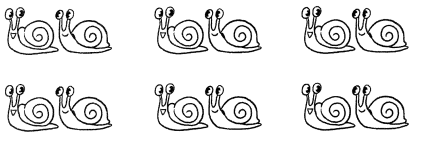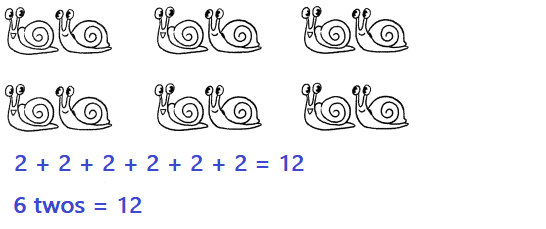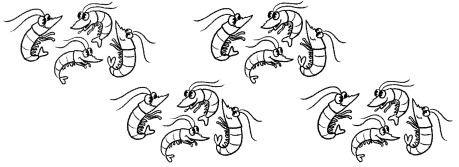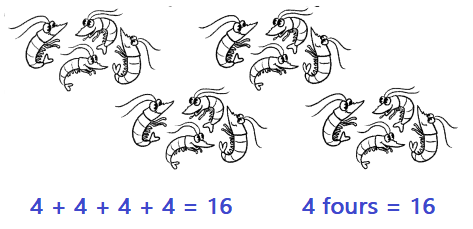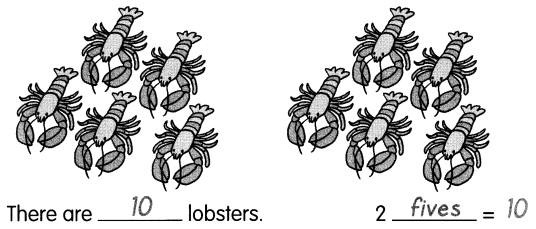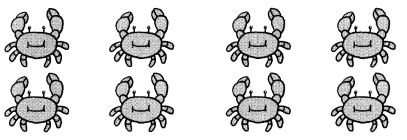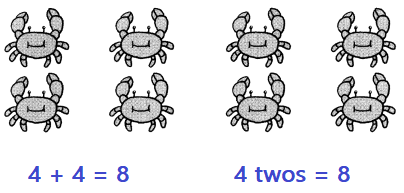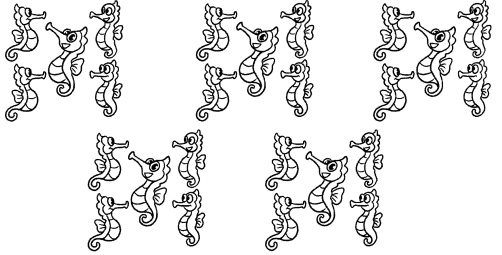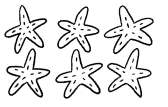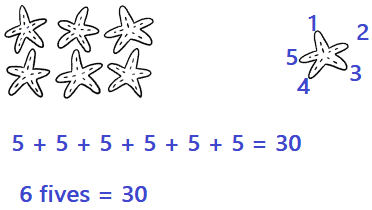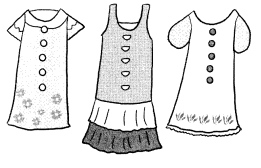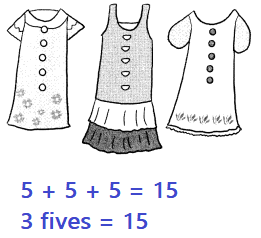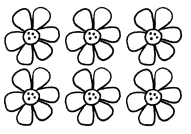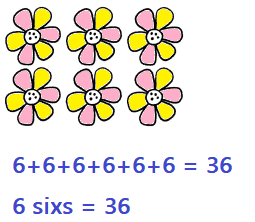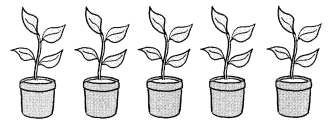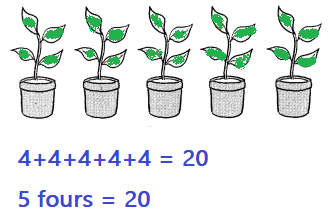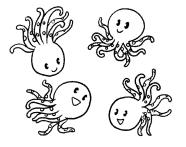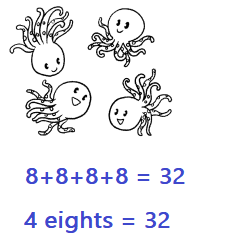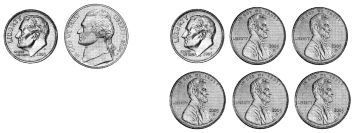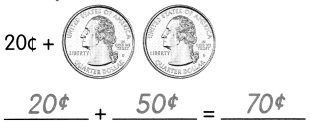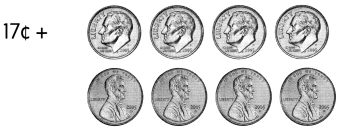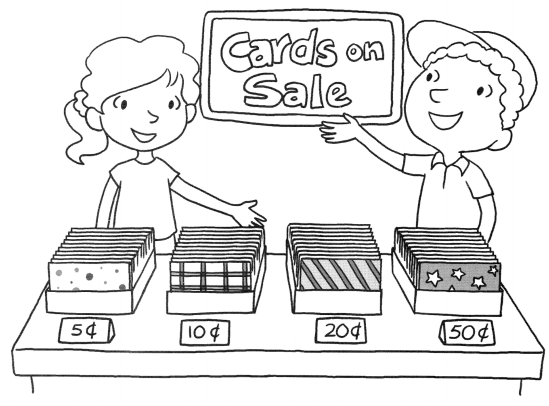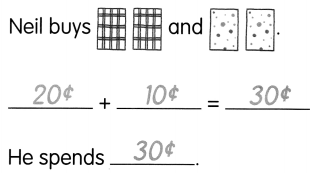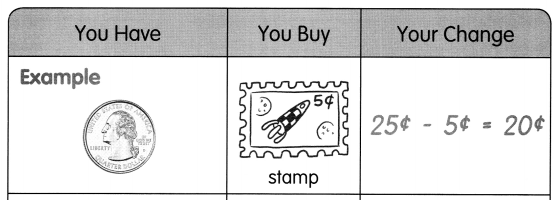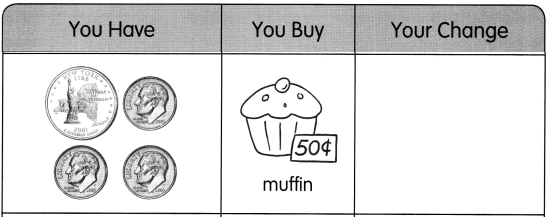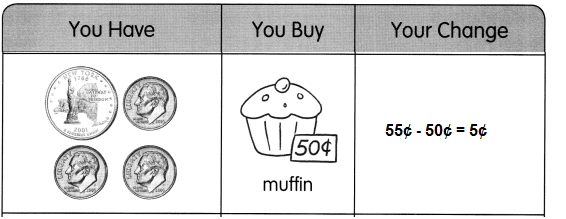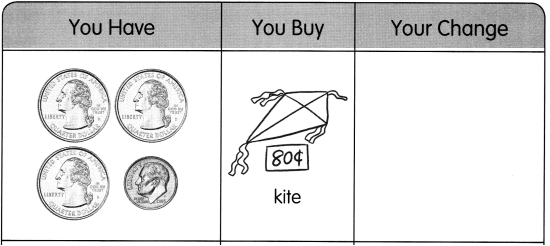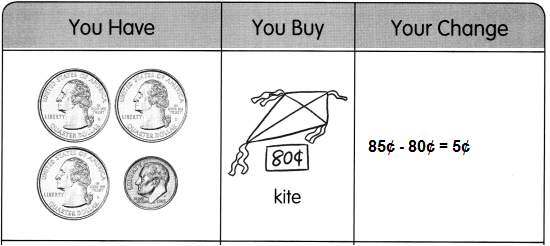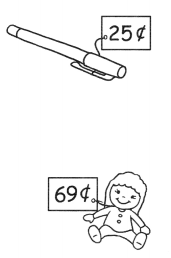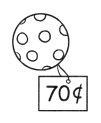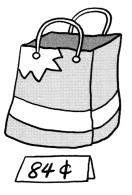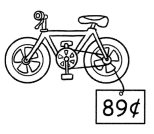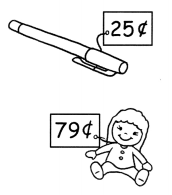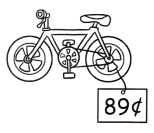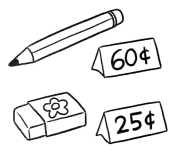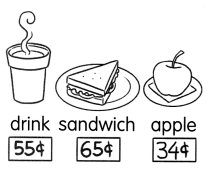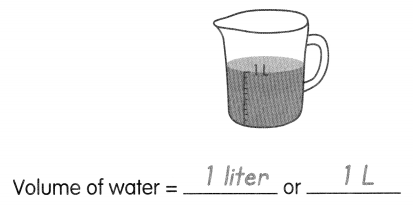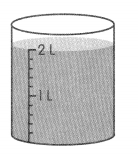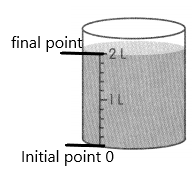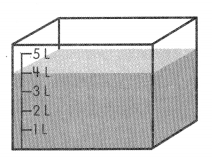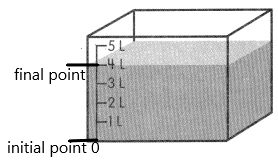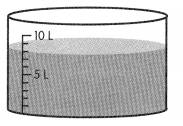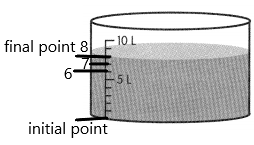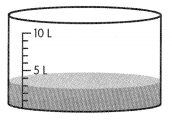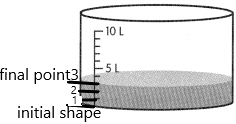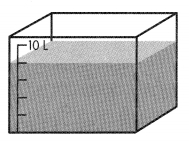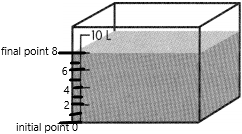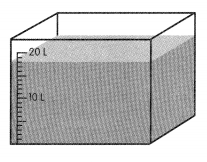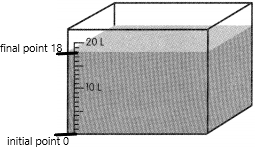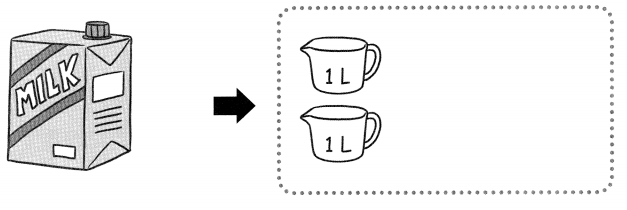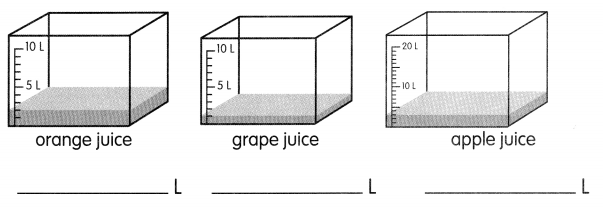Practice the problems of Math in Focus Grade 4 Workbook Answer Key Chapter 7 Practice 2 Understanding Hundredths to score better marks in the exam.
Math in Focus Grade 4 Chapter 7 Practice 2 Answer Key Understanding Hundredths
Shade the squares to represent each decimal.
Each large square represents 1 whole.
Example
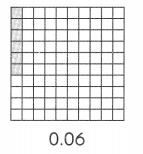
Question 1.
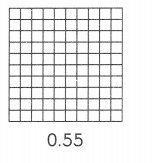
Answer:
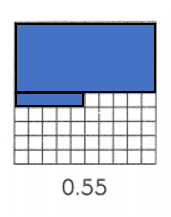
Explanation:
0.55 = 0.50 + 0.05.
Question 2.
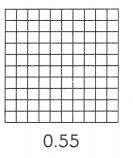
Answer:
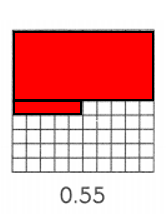
Explanation:
0.55 = 0.50 + 0.05.
Question 3.
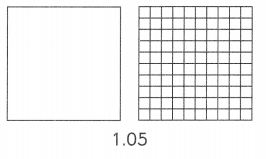
Answer:
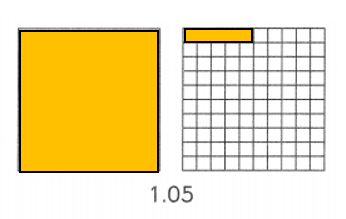
Explanation:
1.05 = 1.00 + 0.05.
Write a decimal for each place-value chart.
Question 4.
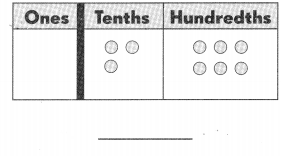
Answer:
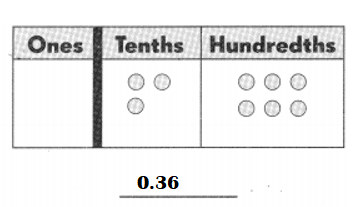
Explanation:
0 ones 3 tenths 6 hundredths = 0.36.
Question 5.
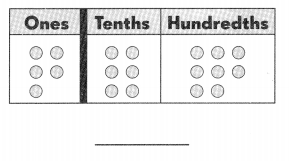
Answer:
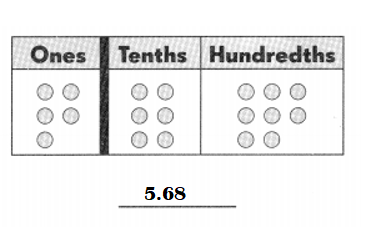
Explanation:
5 ones 6 tenths 8 hundredths = 5.68.
Question 6.
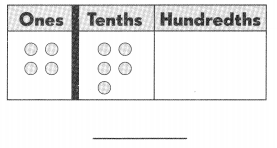
Answer:
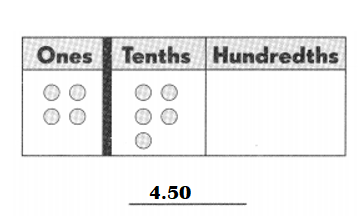
Explanation:
4 ones 5 tenths 0 hundredths = 4.50.
Question 7.
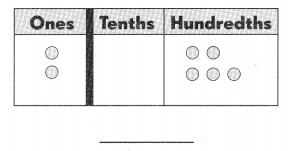
Answer:
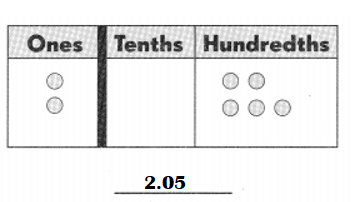
Explanation:
2 ones 0 tenths 5 hundredths = 2.05.
Write the correct decimal in each box.
Question 8.

Answer: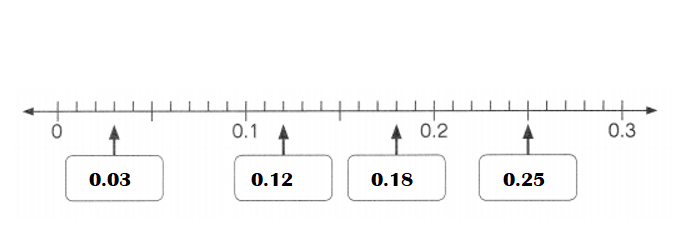
Explanation:
0 + 0.03 = 0.03.
0.1 + 0.02 = 0.12.
0.12 + 0.06 = 0.18.
0.2 + 0.05 = 0.25.
Mark ✗ t0 show where each decimal is located on the number line. Label its value.

Question 9.
0.14
Answer:

Explanation:
0.1 + 0.04 = 0.14.
Question 10.
0.22
Answer:

Explanation:
0.20 + 0.02 = 0.22.
Question 11.
0.27
Answer:

Explanation:
0.20 + 0.07 = 0.27.
Write each of these as a decimal.
Question 12.
9 hundredths = ___________
Answer:
9 hundredths = 0.09.
Explanation:
9 hundredths = 9 ÷ 100 = 0.09.
Question 13.
23 hundredths = __________
Answer:
23 hundredths = 0.23.
Explanation:
23 hundredths = 23 ÷ 100 = 0.23.
Question 14.
6 tenths 1 hundredth = ___________
Answer:
6 tenths 1 hundredth = 0.61.
Explanation:
6 tenths 1 hundredth = 0.61.
Question 15.
7 ones and 90 hundredths = __________
Answer:
7 ones and 90 hundredths = 7.090.
Explanation:
7 ones and 90 hundredths = 7.090.
Write each fraction as a decimal.
Question 16.
\(\frac{5}{100}\) = _______
Answer:
\(\frac{5}{100}\) = 0.05.
Explanation:
\(\frac{5}{100}\) = 0.05.
Question 17.
\(\frac{19}{100}\) = _______
Answer:
\(\frac{19}{100}\) = 0.19.
Explanation:
\(\frac{19}{100}\) = 0.19.
Question 18.
\(\frac{83}{100}\) = _______
Answer:
\(\frac{83}{100}\) = 0.83.
Explanation:
\(\frac{83}{100}\) = 0.83.
Question 19.
\(\frac{70}{100}\) = _______
Answer:
\(\frac{70}{100}\) = 0.70.
Explanation:
\(\frac{70}{100}\) = 0.70.
Write each fraction or mixed number as a decimal.
Question 20.
3\(\frac{17}{100}\) = _______
Answer:
3\(\frac{17}{100}\) = 3.17.
Explanation:
3\(\frac{17}{100}\) = (300 + 17) ÷ 100
= \(\frac{317}{100}\)
= 3.17.
Question 21.
18\(\frac{9}{100}\) = _______
Answer:
18\(\frac{9}{100}\) = 18.09.
Explanation:
18\(\frac{9}{100}\) = (1800 + 9) ÷ 100
= \(\frac{1809}{100}\)
= 18.09
Write each fraction or mixed number as a decimal.
Question 22.
\(\frac{233}{100}\) = _______
Answer:
\(\frac{233}{100}\) = 2.33.
Explanation:
\(\frac{233}{100}\) = 2.33.
Question 23.
\(\frac{104}{100}\) = _______
Answer:
\(\frac{104}{100}\) =1.04.
Explanation:
\(\frac{104}{100}\) = 1.04.
Write each decimal in hundredths.
Question 24.
0.07 = __________ hundredths
Answer:
0.07 = 7 hundredths.
Explanation:
0.07 = 7 ÷ 100 = 7 hundredths.
Question 25.
2.31 = __________ hundredths
Answer:
2.31 = 231 hundredths.
Explanation:
2.31 = 231 ÷ 100 = 231 hundredths.
Question 26.
1.83 = __________ hundredths
Answer:
1.83 = 183 hundredths.
Explanation:
1.83 = 183 ÷ 100 = 183 hundredths.
Question 27.
5.09 = __________ hundredths
Answer:
5.09 = 509 hundredths.
Explanation:
5.09 = 509 ÷ 100 = 509 hundredths.
Fill in the blanks.
Question 28.
0.38 = __________ tenths 8 hundredths
Answer:
0.38 = 3 tenths 8 hundredths.
Explanation:
0.38 = 3 tenths 8 hundredths.
Question 29.
2.71 = 2 ones and 7 tenths __________ hundredth
Answer:
2.71 = 2 ones and 7 tenths 1 hundredth.
Explanation:
2.71 = 271 ÷ 100 = 2 ones and 7 tenths 1 hundredth.
Question 30.
5.09 = 5 ones and __________ hundredths
Answer:
5.09 = 5 ones and 9 hundredths.
Explanation:
5.09 = 509 ÷ 100 = 5 ones and 9 hundredths.
Question 31.
8.86 = 8 ones and 8 tenths ___________ hundredths
Answer:
8.86 = 8 ones and 8 tenths 6 hundredths.
Explanation:
8.86 = 886 ÷ 100 = 8 ones and 8 tenths 6 hundredths.
You can write 6.13 in expanded form as 6 + \(\frac{1}{10}\) + \(\frac{3}{100}\). Complete in the same way.
Question 32.

Answer:
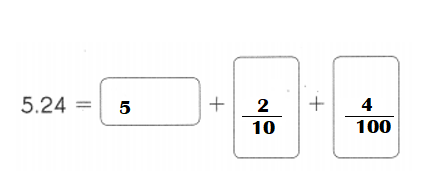
Explanation:
5.24 = 5 + \(\frac{2}{10}\) + \(\frac{4}{100}\)
= 5 + 0.20 + 0.04.
Question 33.

Answer:
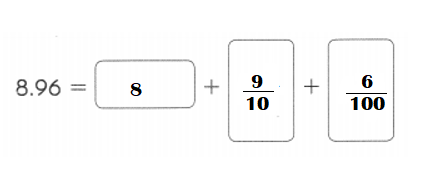
Explanation:
8.96 = 8 + \(\frac{9}{10}\) + \(\frac{6}{100}\)
= 8 + 0.90 + 0.06.
You can write 7.45 in expanded form as 7 +0.4 + 0.05. Complete in the same way.
Question 34.

Answer:

Explanation:
4.31 = 4 + 0.30 + 0.01.
Question 35.

Answer:

Explanation:
9.57 = 9 + 0.50 + 0.01
Fill in the blanks.
Question 36.
In 0.38, the digit 8 is in the ____ place.
Answer:
In 0.38, the digit 8 is in the hundredths place.
Explanation:
In 0.38,
=> 0 ones 3 tenths 8 hundredths.
The digit 8 is in the hundredths place.
Question 37.
In 1 2.67, the digit in the tenths place is ___.
Answer:
In 1 2.67, the digit in the tenths place is 6.
Explanation:
In 1 2.67,
=> 1 tens 2 ones 6 tenths 7 hundredths.
The digit in the tenths place is 6.
Question 38.
In 3.45, the value of the digit 5 is ____.
Answer:
In 3.45, the value of the digit 5 is hundredths(0.05).
Explanation:
In 3.45,
=> 3 ones 4 tenths 5 hundredths.
The value of the digit 5 is hundredths(0.05).
Question 39.
In 5.02, the value of the digit 2 is ___________ hundredths.
Answer:
In 5.02, the value of the digit 2 is 0.02 hundredths.
Explanation:
In 5.02,
=> 5 ones 0 tenths 2 hundredths.
The value of the digit 2 is 0.02 hundredths.
Write each amount in decimal form.
Question 40.
75 cents = $ _______
Answer:
75 cents = $ 0.75.
Explanation:
75 cents = $ ??
Conversion:
1 dollar = 100 cents.
=> 75 cents = 75 ÷100
= $0.75.
Question 41.
40 cents = $_______
Answer:
40 cents = $0.40.
Explanation:
40 cents = $ ??
Conversion:
1 dollar = 100 cents.
=> 40 cents = 40 ÷100
= $0.40.
Question 42.
5 cents = $____
Answer:
5 cents = $0.05.
Explanation:
5 cents = $ ??
Conversion:
1 dollar = 100 cents.
=> 5 cents = 5 ÷100
= $0.05.
Question 43.
130 cents = $____
Answer:
130 cents = $ 1.30.
Explanation:
130 cents = $ ??
Conversion:
1 dollar = 100 cents.
=> 130 cents = 130 ÷100
= $ 1.30.
Question 44.
10 dollars and 25 cents = $____
Answer:
10 dollars and 25 cents = $ 10.25.
Explanation:
10 dollars and 25 cents = $ ??
Conversion:
1 dollar = 100 cents.
=> 10 dollars and 25 cents = $10 +$(25 ÷100)
= $10 + $ 0.25
= $10.25.
Question 45.
28 dollars = $____
Answer:
28 dollars = $28.00.
Explanation:
28 dollars = $ ??.
Conversion:
1 dollar = 100 cents.
=> 28 dollars
= $28.00.
Question 46.
1 dollar and 9 cents = $____
Answer:
1 dollar and 9 cents = $1.09.
Explanation:
1 dollar and 9 cents = $ ??
Conversion:
1 dollar = 100 cents.
=> 1 dollar and 9 cents = $1 + $(9 ÷ 100)
=> $1 + $0.09
=> $1.09.







